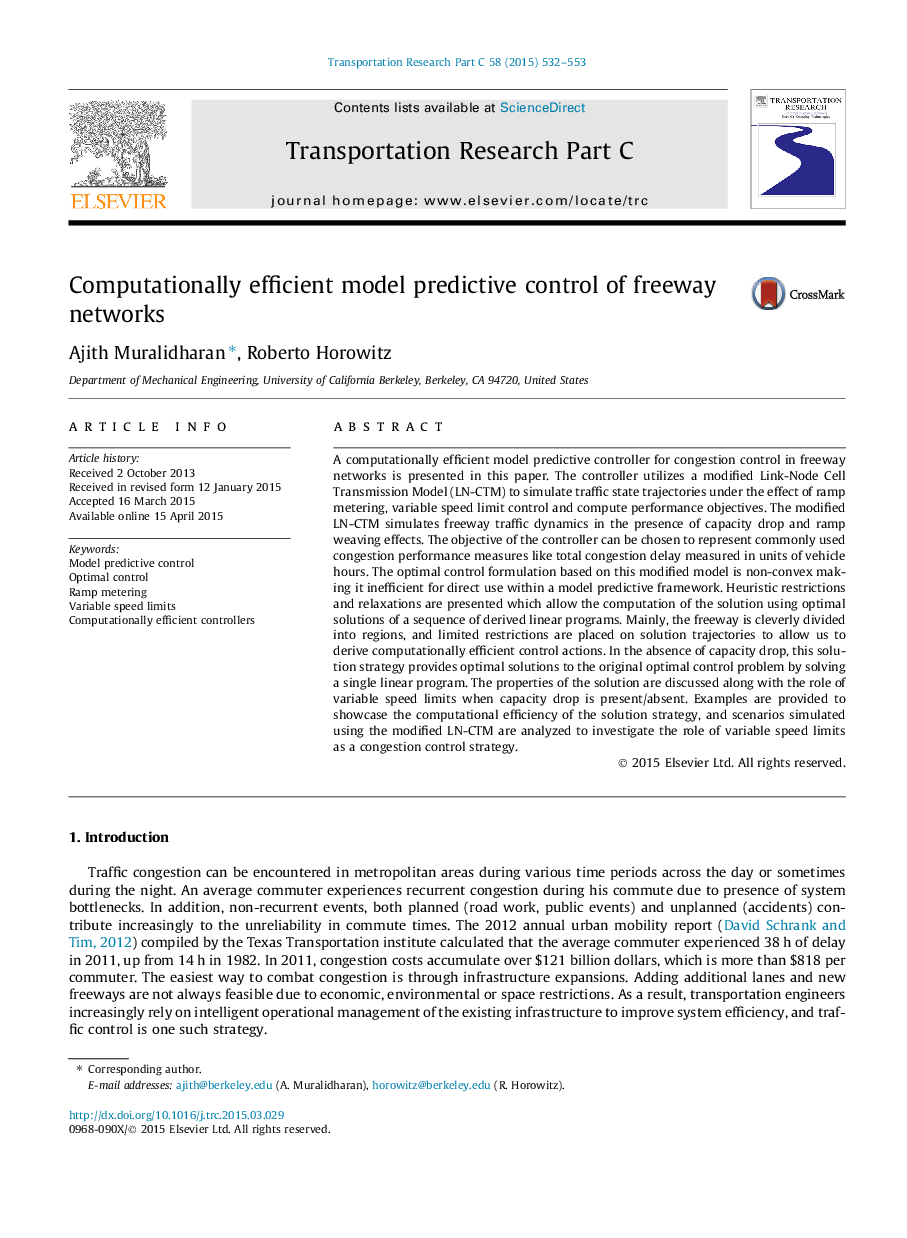| Article ID | Journal | Published Year | Pages | File Type |
|---|---|---|---|---|
| 524938 | Transportation Research Part C: Emerging Technologies | 2015 | 22 Pages |
•An efficient model predictive controller utilizing ramp metering/VSL is presented.•The underlying modified LN-CTM models weaving effects and capacity drop.•Assumptions/restrictions are introduced to solve the original non-convex problem efficiently.•Methodology involves solving a sequence of linear programs.•Characteristics of the solution and the role of variable speed limits are investigated.
A computationally efficient model predictive controller for congestion control in freeway networks is presented in this paper. The controller utilizes a modified Link-Node Cell Transmission Model (LN-CTM) to simulate traffic state trajectories under the effect of ramp metering, variable speed limit control and compute performance objectives. The modified LN-CTM simulates freeway traffic dynamics in the presence of capacity drop and ramp weaving effects. The objective of the controller can be chosen to represent commonly used congestion performance measures like total congestion delay measured in units of vehicle hours. The optimal control formulation based on this modified model is non-convex making it inefficient for direct use within a model predictive framework. Heuristic restrictions and relaxations are presented which allow the computation of the solution using optimal solutions of a sequence of derived linear programs. Mainly, the freeway is cleverly divided into regions, and limited restrictions are placed on solution trajectories to allow us to derive computationally efficient control actions. In the absence of capacity drop, this solution strategy provides optimal solutions to the original optimal control problem by solving a single linear program. The properties of the solution are discussed along with the role of variable speed limits when capacity drop is present/absent. Examples are provided to showcase the computational efficiency of the solution strategy, and scenarios simulated using the modified LN-CTM are analyzed to investigate the role of variable speed limits as a congestion control strategy.
